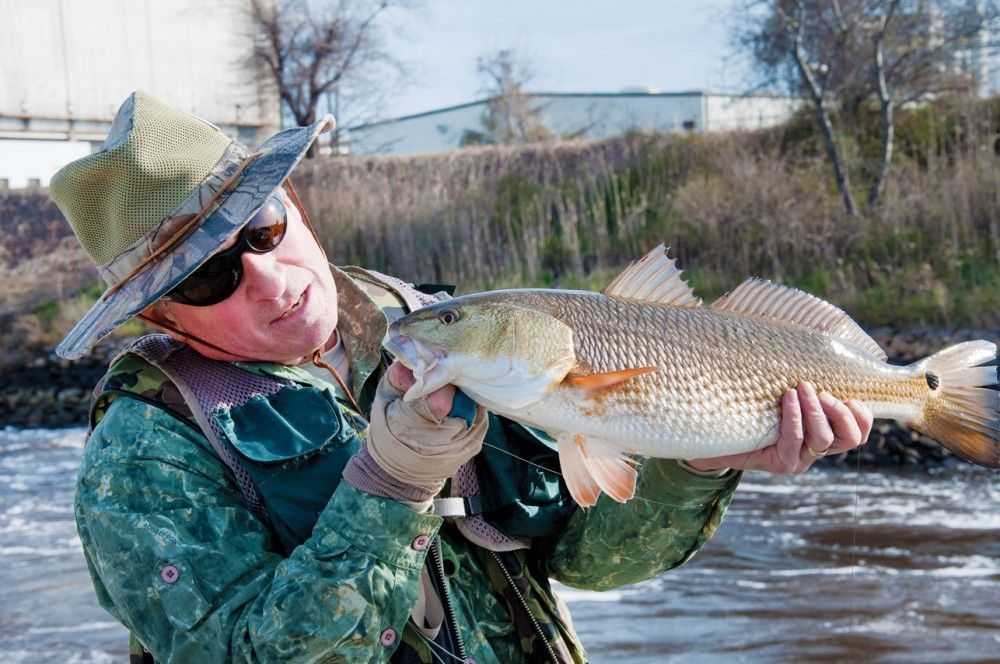Photo Credit: Will Sweatt/VASG
Fly Fishing the Flood Tides for Redfish
Carter Lyles
Whether you are headed to Amelia Island north of Jacksonville, Fla. or to Wilmington, N.C. this summer, it is a terrific time to target the flood tide redfish.
A flood tide is basically a larger than normal tide that forces water onto short spartina grass flats that remain dry on normal high tides. On a monthly average, you can expect around 15 of these “flood tides,” depending on moon phases. In order to recognize a flood tide, one must know the average high tide patterns for their area. For example, in St. Simons, Ga., an average tide is around 7 to 7.5 feet. A flood tide would occur in St. Simons around an 8- to 9.5-foot high tide. The warm water temperatures during the summer months create an ideal habitat for the fiddler crabs, which disappear once the water temperature goes below 65 degrees. Fiddler crabs in great abundance roam this dry area, creating an absolute feeding frenzy for hungry redfish, very similar to the salmon fly hatch out west.
When fly fishing the flood tide, you want to start at the minimum an hour before the high tide. The last hour of incoming and the first hour of outgoing is when you will experience the best fishing. Once fall arrives, the redfish will continue feeding throughout the entire flood tide. You need to keep an eye out for the “water roads” that provide the redfish access onto the higher flat once the water goes up.
When the fish are on the flats, scan the water around you for tails popping through the surface and waiving at you. The redfish are feeding on the fiddler crabs by digging their hard noses into the mud bottom to push up the bait, sending their tails in the air. Also listen very carefully because you can hear the redfish splashing around. My absolute favorite fly for the flood tide is Ratliff’s Fiddlestick Crab, which you can only custom tie. Other successful patterns include Cathy’s Fleeing Crab, the Kung Fu Crab and the Merkin Fly. The essentials for these flies is having a working weed guard or you will spend most of the time hung up in the grass and some weight to get the fly down in the strike zone fast.
Tapered 16-pound fluorocarbon leaders around 9 to 10 feet long can provide soft presentations and turn the fly over with ease. Although fishing from a skiff is the best way to fish a flood tide because of the stealth and visibility, one can wade as well. If you want to search for flood tide reds on your own, you have to know what to look for. Short spartina grass around 10 inches tall has hard bottoms. Grass that is 2 to 3 feet tall has very muddy bottoms and you will sink like a boulder if you step into the muck. You can find these shorter spartina grass flats close to tiny barrier islands, in the middle of the taller spartina grass or on the sides of the larger islands at a higher elevation.
Jump on Google Earth and pick out some spots to check, but know that not every flat is the same. Different tides will affect different flats, so be prepared to cover water if you don’t see fish tailing within the first hour on or near one short spartina grass flat. Find a flat that you know is close to a big school of redfish.
When I lived in St. Simons for a while, I found several flats that had perfect hard bottoms, spartina grass, great access, safety from predators and thousands of fiddler crabs but no redfish. Redfish are like hermits, they don’t want to move if they don’t have to.
Good luck with your redfish ventures and keep those lines tight!
Contributed by The Fish Hawk in Atlanta, thefishhawk.com.
